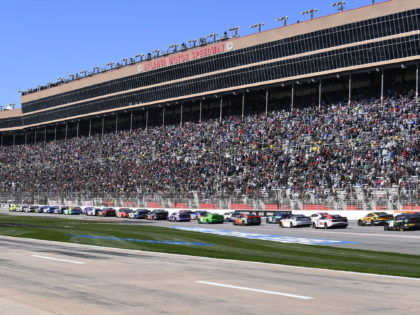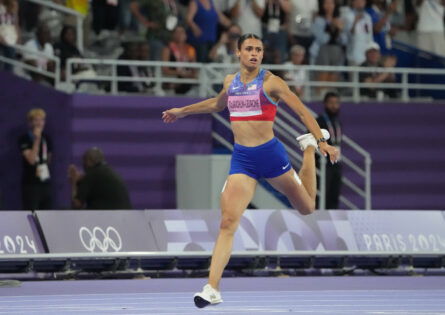Since opening in 1960 as Atlanta Motor Speedway, the venue has stood on the verge of greatness and challenge, hosting the Dixie 300 that same year. The track birthed unforgettable rivalries, including the 1992 Hooters 500, where Alan Kulwicki clinched the championship in a tense battle against Bill Elliott and on the farewell lap for Richard Petty and Jeff Gordon’s debut. Then, in 2001, rookie Kevin Harvick claimed a victory at the Cracker Barrel 500 just weeks after replacing Dale Earnhardt, making it a healing moment for fans and the #3 team.
But financial trials followed, including a 1971 Chapter 10 bankruptcy, but a 1990 purchase by Bruton Smith’s Speedway Motorsports returned it to prominence. The 1997 reconfiguration to a quad-oval transformed its character, creating multi-groove racing that became beloved by drivers and fans. Georgia’s asphalt has since been a proving ground where history was written and legacies built. But the latest chapter sees Atlanta transformed once more, as Kevin Harvick dives deep into the history of the track’s rebuilding with Marcus Smith.
How Atlanta became NASCAR’s most surprising superspeedway
In the recent episode of his podcast ‘Happy Hour,’ Kevin Harvick sat down with Superspeedway Motorsports CEO Marcus Smith to talk about Atlanta Motor Speedway’s revival story. While it may have harbored some of the greatest histories in NASCAR history, Harvick had one question for the Smith family. “You go through this historic race track that’s had championships and had this longstanding history in our sport with so many moments and different things that go through the years, and then you guys go and you change the racetrack, and I think it’s fair to say it kind of hit a low,” said Harvick. “And now it’s probably the most popular race on the schedule from a viewer standpoint. Is that fair?”
Harvick’s question is quite relevant to the 2025 season. The February 2025 Ambetter Health 400 drew an impressive 4.568 million viewers on FOX, making a 1% year-over-year increase, while being the most-watched sporting event of the weekend. The figure also ranks it among the highest-rated Atlanta races since 2019, when the QuikTrip 500 attracted 5.07 million viewers. “I don’t know if it’s the most popular,” Smith answered on the podcast. “It’s really cool to see all the positive comments about Atlanta. I mean, it’s up there with one of the tracks that you want to go to, that you would kind of say, If I’m only going to two or three races this year. I want to make sure Atlanta is on that list.”
Atlanta’s transformation from a traditional intermediate track to an adrenaline-fueled superspeedway owes much to a broader shift in NASCAR’s rules packages. “The way that the Daytona Talladega races have kind of evolved to, and then you look at Atlanta with virtually the, the same rules package,” said Harvick. “You have to have a little bit of downforce in your car. But you look at the end of that race, and it’s just, it’s exciting, with the way that they can pass and maneuver, and it added an element to it.” When officials debuted low-downforce regulations at intermediate tracks like Kentucky, drivers praised the change. In fact, Harvick himself led 131 laps under a similar setup in 2016 and celebrated the fun of real racing.
But things have changed since its revival, taking the concept further. When asked why the renovation went about, Smith turned the pages of its history book all the way back to Kentucky Speedway. “After we bought Kentucky, one of the things on the list was we’ve got to eventually repave, because the pavement was in pretty bad shape,” said Smith. “And me and Steve Swift talked, and one of the things you always know, a repave usually makes for boring races for the next several races.” In response, the team resurfaced Kentucky with a higher 17-degree banking in Turns 1-2 and narrowed the track, then accelerated its aging process using lye and grooming techniques to simulate a worn surface. After seeing mixed results in Kentucky, the team repeated a different re-profiling approach in Texas.
Smith’s team brought those lessons to Atlanta, aiming to combine the excitement of an aged track with superspeedway-style banking. “We talked to NASCAR about it,” said Smith. “They were open to it. We went to iRacing and asked for their help to simulate it, and we worked on that quite a bit.” iRacing models allowed designers to tweak turn profiles hundreds of laps before construction began, ensuring the final CAD design would deliver unpredictable passes and exciting handling from day one.
Smith also added, “So thankfully, Steve accepted the challenge. He did tell me it was the toughest repave to hold equipment up on the track for that steep of a bank. It takes a special type of equipment to be able to do that, and it was a really difficult job. But the team did phenomenal work, and it’s been fun to watch.” As the machines began reshaping Atlanta’s turns, bringing those simulated laps to life, his vision became evident: a high-drama track that plays like a superspeedway but lives like an aged intermediate.
Therefore, the shift might have been taken by fans with a pinch of salt, but the drama continues to live on. For both Kevin Harvick and Marcus Smith, acing and reality finally aligned, and it’s been a racing renaissance ever since.
Ryan Blaney and others question Atlanta’s new DNA
Once known for its worn-out surface and old-school charm, the track was reconfigured between 2021 and 2022 in a superspeedway-style circuit with 28-degree banking and a much narrower groove. The intent was clear: maximize the pack racing, amplify the drama, and bring more eyes to the screen. By those metrics, the 2025 Quaker State 400 was a roaring success, with a 23-car pileup that rattled fans and drivers alike.
Veteran spotter Freddie Kraft captured the mayhem vividly: “One guy gets turned down the backstretch and literally three-quarters of the field packed into the same wreck.” Incidents like the one that eliminated Joey Logano, Denny Hamlin, and William Byron from the 2025 race have become the new norm. Similar pileups also plagued this year’s Ambetter Health 400 and last season’s playoff race. As the spectacle grows, so do the questions about safety and skill behind the wheel.
Ryan Blaney, no stranger to these wrecks, voiced what many drivers feel but don’t always say. “Yeah, it’s just pandemonium of chaos,” he summed it up candidly. “There are fun moments, but yeah, I prefer the old one.” The track may be a hit in TV ratings, but for drivers like Blaney, it is becoming less about racing and more about surviving the show.
The post NASCAR Track Owner Reveals Insane Story of Atlanta’s Unforeseen Revival That Beat Daytona appeared first on EssentiallySports.



